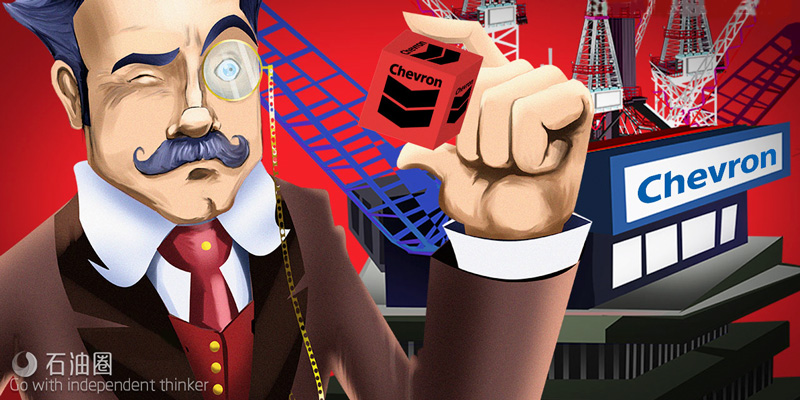
作为世界上最大的综合性油气公司之一,雪佛龙一直以成本优势闻名于世。过去,虽然油价以迅雷不及掩耳之势飞流直下,雪佛龙仍保持较高的勘探成功率;未来,油市趋稳,雪佛龙将继续以领先的技术推动整个行业的发展。
作者 | Ben Bloys
编译 | 白小明
各大石油公司在2016年都经历了不平凡的一年,如今油气市场正缓慢走向平衡,美国的产油量也从峰值减少了90万桶/天,虽然目前油价略有上涨,但许多项目仍面临诸多挑战,特别是深水项目。在此过程中,雪佛龙大幅缩减了运营成本,优化了上游业务的运营效率。例如,Permian盆地的开发成本下降了30%之多,Vaca Muerta、Appalachia和Duvernay区块的单位开发成本下降了30~40%。
继续保持较高的勘探成功率
过去一年,雪佛龙全球勘探业务持续高效开展,公司的储量替代率为107%,即公司发现的油气资源量比生产量多,公司的5年储量替代率为113%。地震技术的进步和高性能计算技术的稳步发展,提高了发现商业可采油气储量的概率。
雪佛龙去年的勘探成功率为62%,近10年平均值为57%。而与30年前石油行业普遍10%的勘探成功率相比,目前的开采率可谓是已经取得了长足的进步。增产技术、完井技术、储层管理以及EOR技术的进步,共同帮助雪佛龙从现有储量中开采出更多的油气。
同时,安全与环保始终是雪佛龙的核心价值观,雪佛龙也在不断优化安全矩阵,定制化培训和流程,帮助每名员工时刻关注安全议题。
主要项目进展
雪佛龙刚刚经历了一段高资本支出时期,许多大规模项目几乎在相近的时间内启动并开展,目前这些项目中的大多数已接近完工,包括:
1. 澳大利亚Gorgon首个LNG工厂开始稳步生产LNG,陆续开始装船。第二个生产线刚上线,第三个生产线预计在一年内上线;
2. 澳大利亚Wheatstone项目已钻完所有井,并建成了大多数基础设施,将于2017年运输第一批LNG;
3. 安哥拉LNG 项目生产的LNG已经装船运输;
4. 北海Alder油田已在2016年第四季度开采出了首批天然气;
5. 印尼Bangka项目已经开始产气;
6. 中国川东北3个天然气厂建成投产。
雪佛龙哈萨克斯坦Tengiz大气田扩产项目已经达成协定,预计项目将于2022年启动,它将为气田带来约26万桶油当量/天的额外产能。
雪佛龙与其他石油公司一起,在美国国内开始将重点转向西德克萨斯州和东南新墨西哥州Permian区域的低成本致密岩/非常规区块。公司在此盆地的许可面积达8093km2,大多数土地税费为零或者很低。去年以来,开发井的成本已经下降了30%。就整个行业来看,最初和预估的最终采收率都在逐步提高。
未来技术挑战
技术将继续在优化这些区块开发过程中扮演重要角色。截止目前,行业油气资源开发的整体趋势是增大储层接触面积,即采用含更多更大裂缝的大位移水平井。这些超低渗地层的产油非常缓慢,但近5年来,初始和最终采收率以及整体产油量都有了大幅提高。
然而,这方面还将有很大的技术进步空间。目前,采收率仍然低于原始储量的10%。如何能将这一数字提高1~2倍?压裂液对储层有一定的伤害,如何能够降低伤害?
砂岩油藏的模型已经非常复杂了,但其数学算法并没有描述如何从含纳米级孔隙的页岩中生产油气,那么如何开发新的可预测的模型?
新的挑战一个接一个地出现,整个行业的从业者们也在主动解决这些问题。这些非常规页岩区块存在着大量富含油气资源的储层,将在未来几十年里驱使油企不断尝试“更加智慧的开采方式”。
未来优化运营
在行业低迷期,雪佛龙持续推动各项研究以优化公司运营。例如,2017年初,雪佛龙宣布了ISOALKY的商业化(ISOALKY是一种离子溶液烃化催化剂,用于生产高辛烷值的发电机燃料)。
同时,借助美国天然气产业的不断繁荣,雪佛龙也计划于2017在德克萨斯州Baytown启动1500 kMTA的乙烯生产项目,在德克萨斯州Old Ocean启动1000 kMTA产能的聚乙烯生产项目。
总体而言,未来雪佛龙将继续适应市场变化,始终保持其行业竞争力,安全高效的经营公司,并根据未来不同的市场环境谨慎做出发展规划。
Although 2016 was another tough year, the oil market is slowly moving toward balance, while U.S. production is down 900,000 bpd from the peak. Prices have risen a bit ($51/bbl at the time of this writing), but many projects (especially in deep water) are still challenged.
Chevron has reduced operating costs substantially, and improved efficiency in our upstream businesses. Competitive development costs are down 30% in the Permian basin. Unit development costs are down 30% to 40% in the Vaca Muerta, Appalachia and Duvernay plays.
Exploration success. Chevron’s global exploration efforts continue to be effective. Last year, our reserves replacement ratio was 107%, i.e. we discovered more oil and gas than we produced. Our five-year reserves replacement ratio is 113%. Advances in seismic technology and high-performance computing have steadily improved our odds of finding commercial deposits of oil and gas. Our exploration success rate last year was 62%, and our 10-year average is 57%. This is a long way from the typical 10% success rate that prevailed when I joined the industry more than three decades ago. Improvements in stimulation technology, completion techniques, reservoir management and EOR have helped us recover more oil and gas from existing assets.
Safety and environmental responsibility continue to be core values for Chevron. We’ve seen improvement in safety metrics, but our ultimate goal continues to be zero people injured and zero spills. “Do it safely or not at all” and universal “Stop Work Authority” are deeply embedded in our culture. Advanced, customized training and processes help everyone stay focused on safety issues every day.
Major projects status. Chevron is coming off a period of very high capital spending, when a large number of mega-projects were all developing in similar timeframes. Many of these projects are nearing completion, including:
• Gorgon’s (Australia) first LNG train is steadily producing cargos. Train 2 has just gone online, and Train 3 is expected to be online in less than a year.
• Wheatstone (Australia) has completed all of its wells, and much of its infrastructure, and should ship its first LNG in 2017.
• Angola LNG has had several cargos shipped.
• Alder field (North Sea) achieved first gas this quarter.
• Bangka (Indonesia) has achieved first gas.
• Chuandongbei (China) has all three gas trains up and running.
Final Investment Decision was reached for expanding production at giant Tengiz field in Kazakhstan. Start-up for the project is planned for 2022, and it will bring an estimated, additional ~260,000 bopd to the field.
Chevron, along with many others, is shifting more focus to the lower-cost tight rock/unconventional plays in the extensive Permian region of West Texas and southeastern New Mexico. We hold ~2 million acres in these basins, many of which have zero or minimal royalties. Well development costs are down 30% over last year. Across the industry, initial production and estimated ultimate recoverable rates are trending up.
Technology will continue to play a large role in improving performance in these plays. The industry trend, to date, has been to create ever-larger amounts of surface area—longer laterals with more and larger fractures. These ultra-low permeability formations give up their oil very slowly, but the overall gains in initial production and ultimate recovery have been substantial in the last five years.
There is, however, still plenty of room for improvement. Recoveries are still well under 10% of the original oil-in-place. How can we double or triple that? Frac fluids are doing some damage to the producing rock. How can we reduce that?
The reservoir models for sandstones have become pretty sophisticated, but their math algorithms don’t describe how shales are producing from nanometer-sized pores. How do we develop new predictive models? The list of challenges goes on and on, and the industry is actively addressing them. The sheer volume of oil-saturated rock in these unconventional shale plays will keep us trying to “work smarter” for the next several decades.
Within the downstream, Chevron continues to make advancements in research to improve our operations. This year, Chevron announced the commercialization of ISOALKY, an ionic liquid alkylation catalyst used to produce high-octane motor fuels. Taking advantage of the boom in U.S. gas production, we also plan to start-up 1,500 kMTA of ethylene capacity in Baytown, Texas, and 1,000 kMTA of polyethylene capacity in Old Ocean, Texas, in 2017.
Overall, Chevron continues to adapt to the market and remains competitive while operating safely and responsibly, and planning carefully for a range of possible future conditions.
未经允许,不得转载本站任何文章:
-

- 甲基橙
-
石油圈认证作者
- 毕业于中国石油大学(华东),化学工程与技术专业,长期聚焦国内外油气行业最新最有价值的行业动态,具有数十万字行业观察编译经验,如需获取油气行业分析相关资料,请联系甲基橙(QQ:1085652456;微信18202257875)


 石油圈
石油圈
